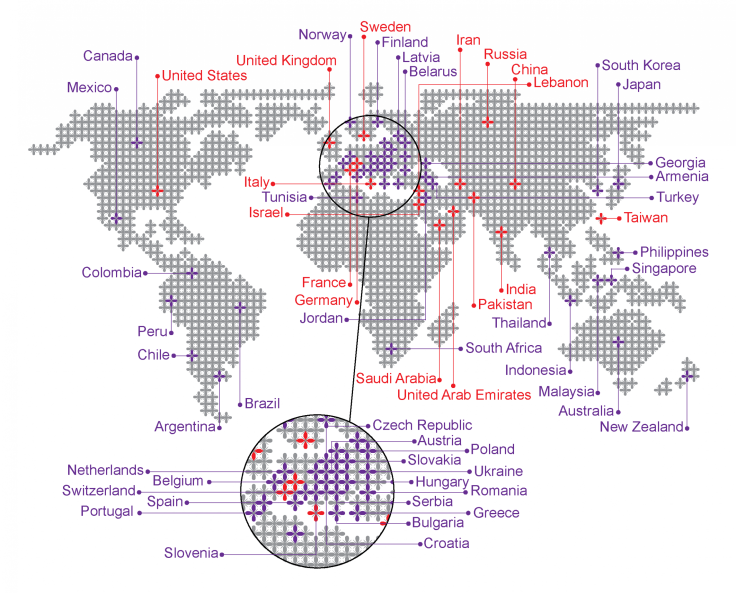Drones: Which Countries Have Them For Surveillance And Military Operations? (MAP)

How long have drones been on your radar? Though it may seem to most people that the controversial "unmanned aerial vehicles" are a relatively recent development in military operations, drones were actually first imagined as far back as World War I, when they were known as “automatic airplanes.” Drones as we know them today -- the buzzing overhead killers with heads like aliens' -- didn’t properly exist until the tail end of the Vietnam era in the early 1970s. Since then, the number of drones in the world has exploded, but due to the often-classified nature of their use, exact numbers are hard to ascertain.
Check out this interactive map of all the countries believed to be in possession of military drones. Red indicates the presence of drones that are capable of killing people and causing destruction. Purple indicates the presence of nonlethal military drones.
As drone technology keeps improving, the expansion of drones' role in combat is likely to continue, as well as controversy over their use for both war-related and nonmilitary purposes. Some experts, such as Christine Fair, a professor in the Center for Peace and Security Studies at Georgetown University, argue that drones not only are cost-effective (even at a typical price of more than $1 million) but also save the lives on the battlefield who would otherwise be shot down and kidnapped or killed. Fair asserts that they are quite precise in their targeting, saying claims of inaccuracies in drone targeting are exaggerated.
“You actually have pilots who are manning the drones. These are not 14-year-old kids right out of basic training, playing around with a joystick,” Fair told NPR.
Others argue that drones do more harm than good, citing the death of women and children in drone strikes in Pakistan as an example. “The impact of drones has been devastating and counterproductive,” said Akbar Ahmed, a senior fellow at the Brookings Institute, in a video. Akbar said that the current drone policy initiated by the U.S. a few years after the 9/11 attacks has stirred up anger and resentment. “If we are killing five or 10 or 15 militants, we are also creating 100, 200, 200,000 enemies for the U.S. For this new kind of warfare, the costs are enormous.”
Much of U.S. drone policy is vague or even unwritten. U.S. President Barack Obama justifies the use of drones in Pakistan under the “Authorization to Use Military Force” act of September 2001, notes John Bellinger, a senior fellow in International and National Security Law at the Council on Foreign Relations,
The act reads, in part, “The President is authorized to use all necessary and appropriate force against those nations, organizations or persons he determines planned, authorized, committed or aided the terrorist attacks that occurred on September 11, 2001, or harbored such organizations or persons, in order to prevent any future acts of international terrorism against the United States by such nations, organizations or persons."
Aside from killing or spying on people, drones also have uses as benign as meteorology or agriculture monitoring. Norway is even rumored to have a new drone in development intended to monitor the Arctic for signs of global warming. Future plans for drones include helping farmers dust crops, monitoring traffic in urban areas, helping in natural disasters, and aiding police investigations and manhunts.
Here is another interactive map: click on the name of any country for more information on the types of drones they own.
© Copyright IBTimes 2024. All rights reserved.






















